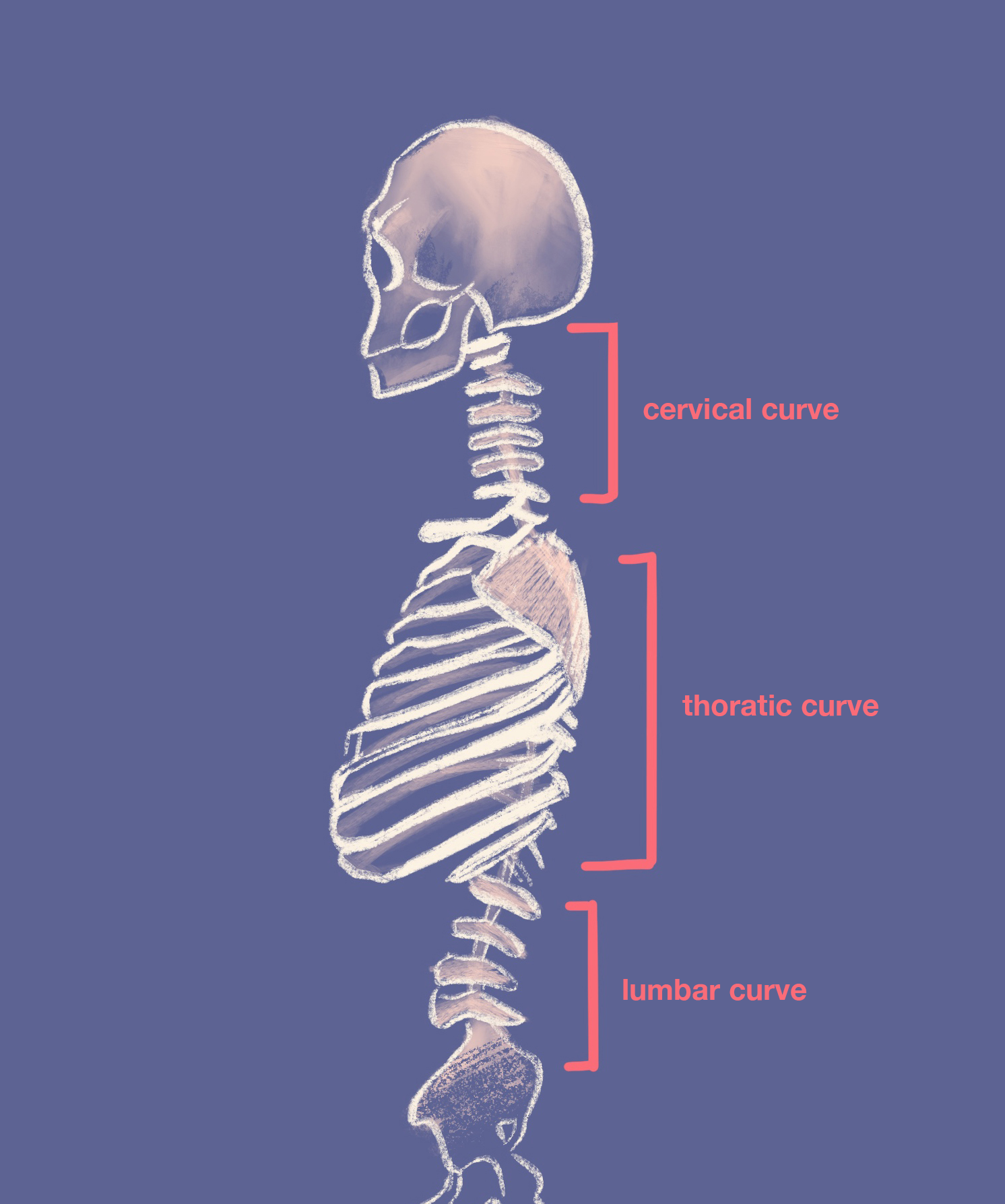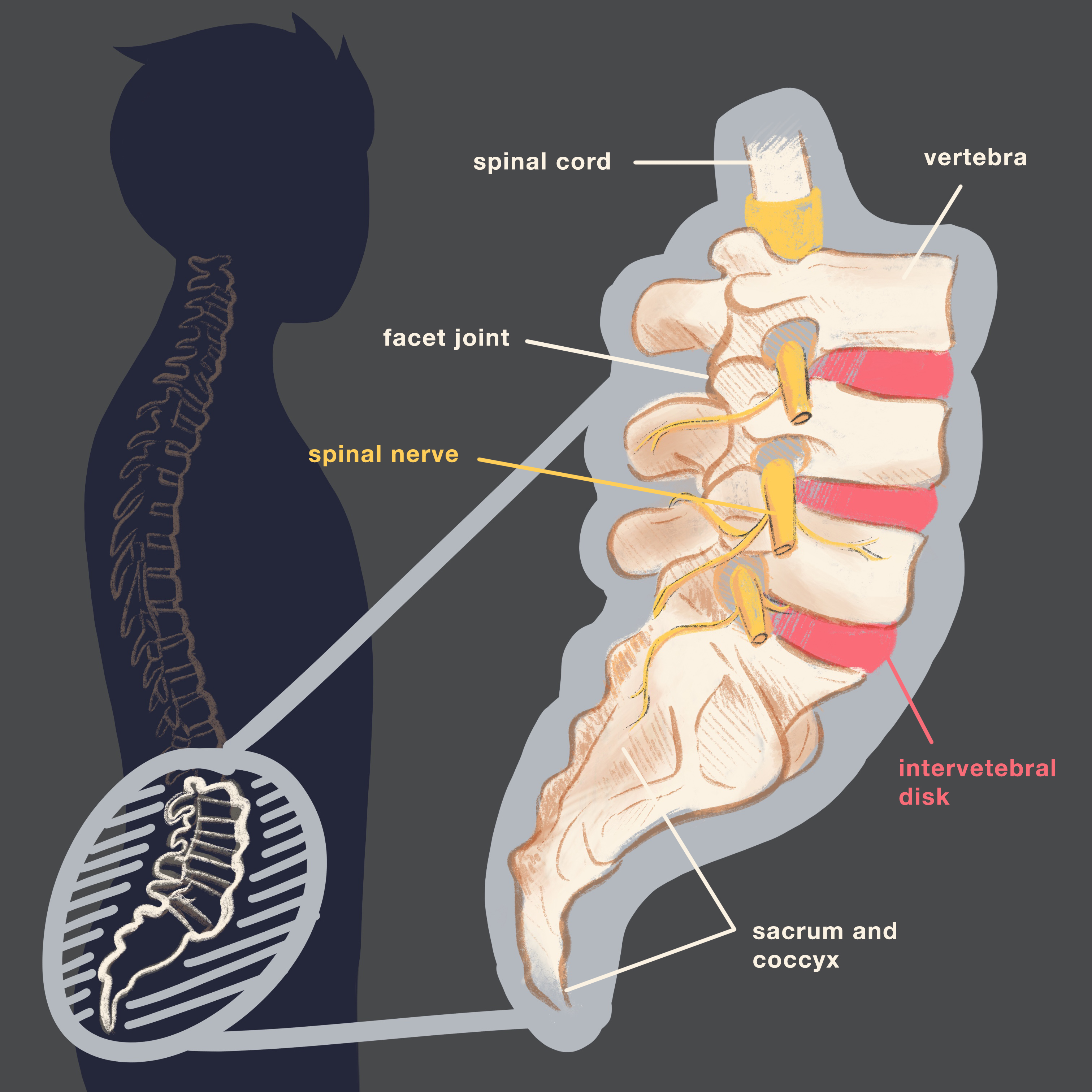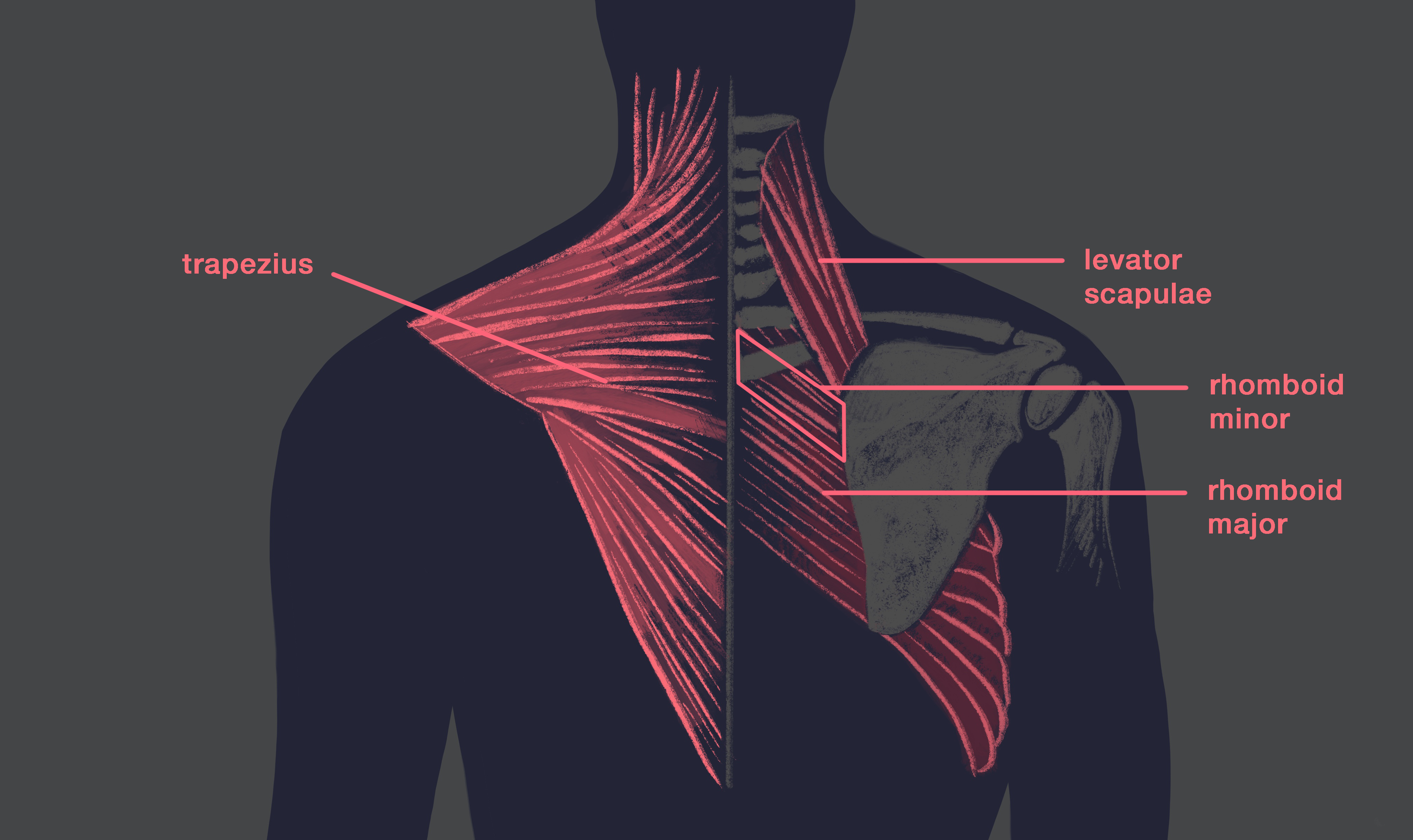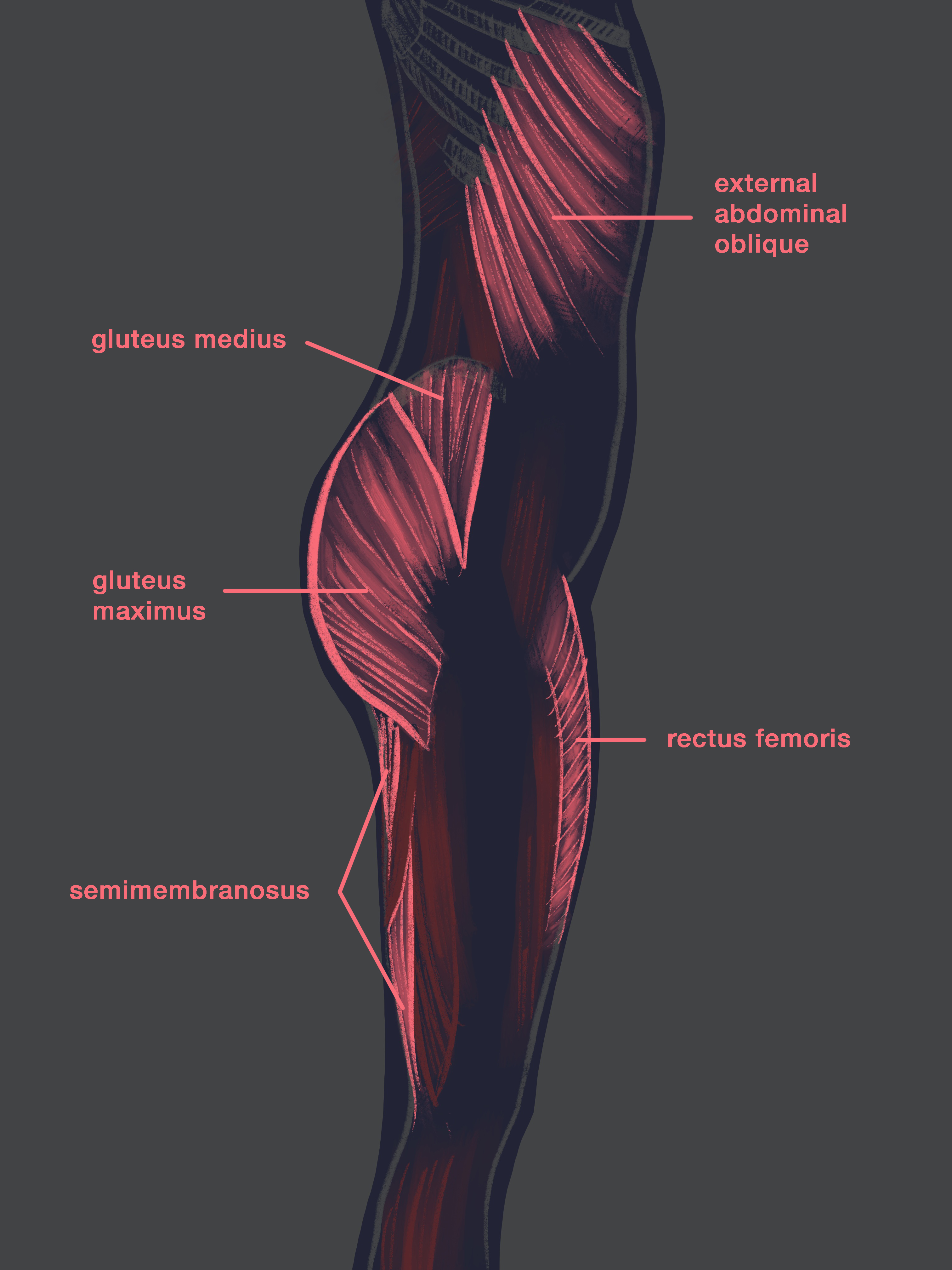
The spine is constructed of a number of bones called vertebrae. There are 33 of them in all, making up the cervical (neck), thoracic (mid-back), and lumbar (low back) as well as the sacrococcygeal (buttock) regions.

The spaces between the vertebrae are maintained by round pads called discs. The discs and small joints called the facet joints between vertebrae allows for the bending and twisting of the spine. Bands of tissue known as ligaments hold the vertebrae and discs in place. When put together the individual parts of the spine form a flexible rod.


Muscles that are attached directly to the spine by tendons allow us to twist and bend. Other muscles connect the shoulders and hips to the spine, so that movement between the arms and legs and the body are coordinated.
The spine also helps to protect our neurological structures. This includes the spinal cord, which helps to relay messages between our nerves and our brain. At each level, a pair of nerves exit the spine, one on each side, and control body movements and transmit sensations from the body to the brain.